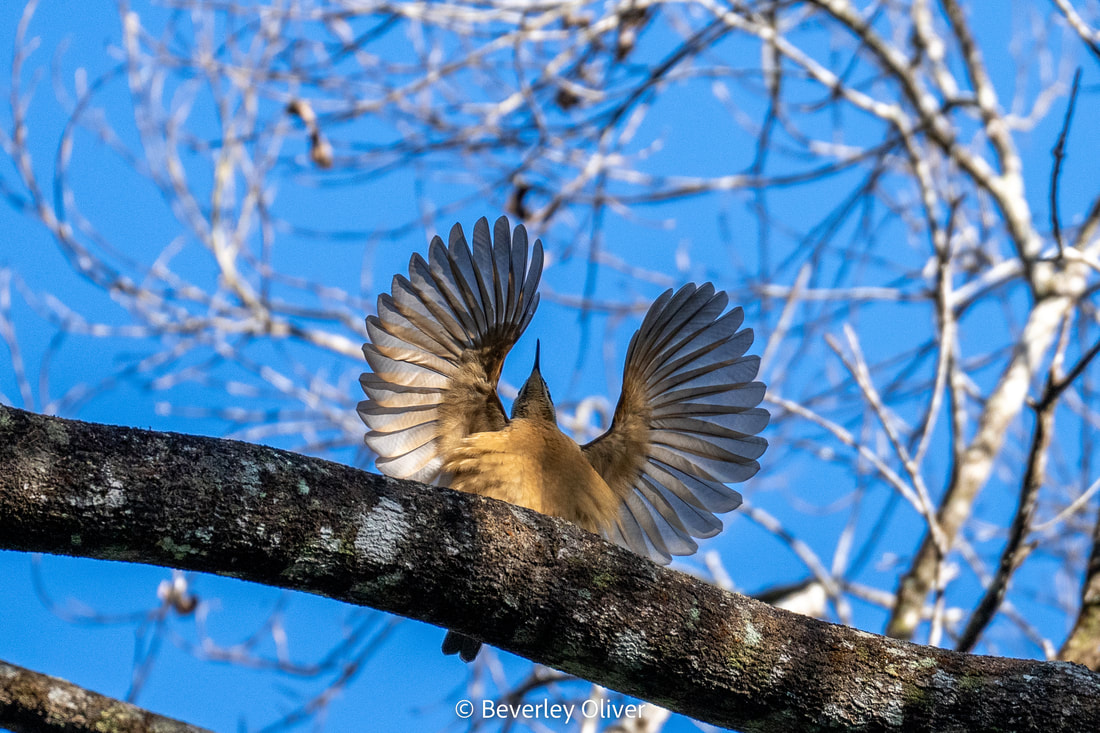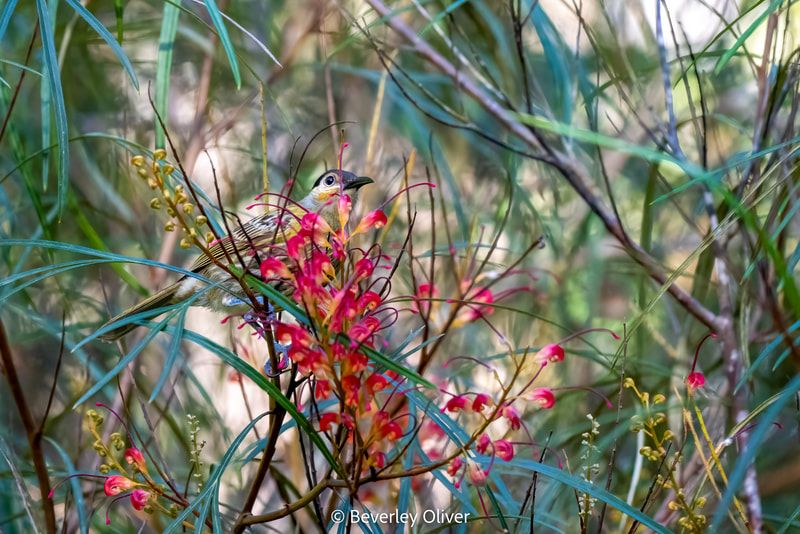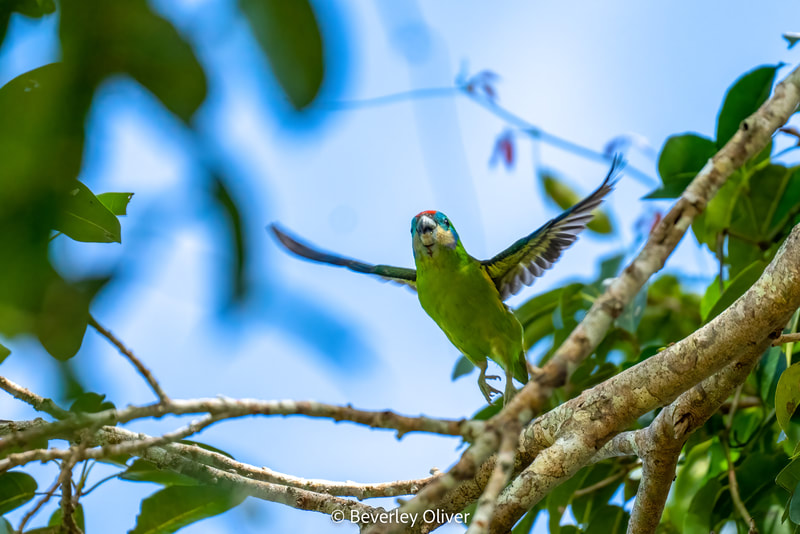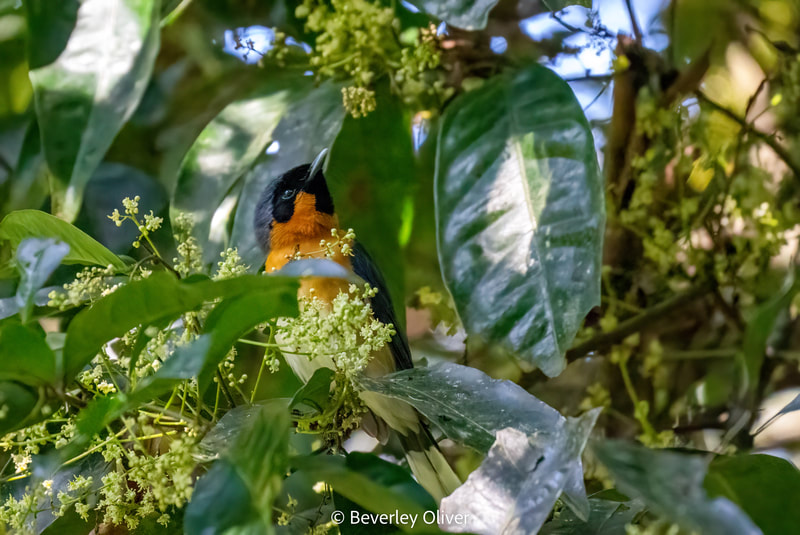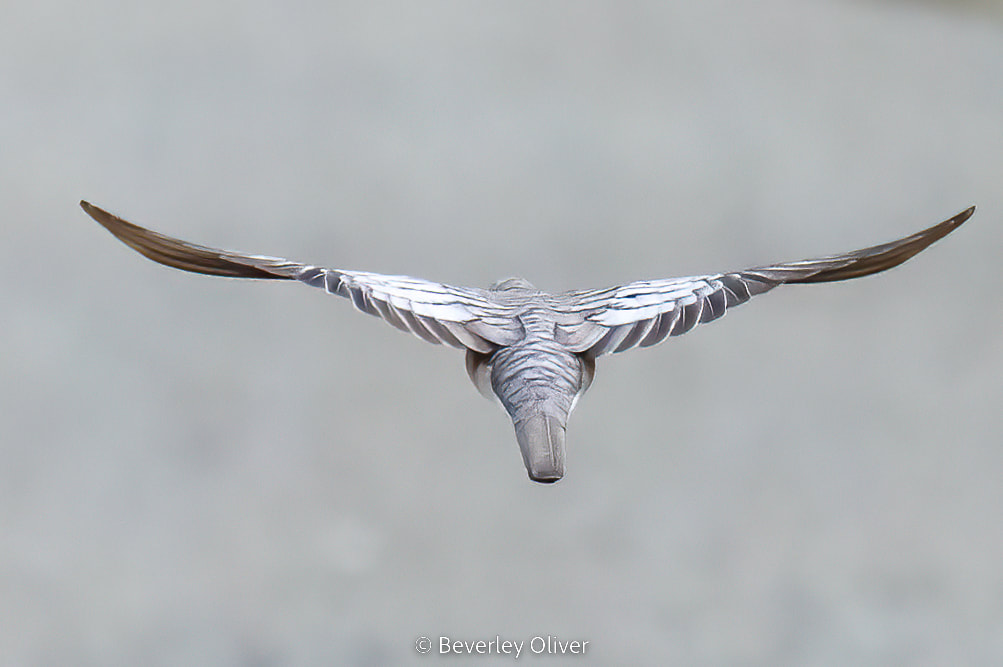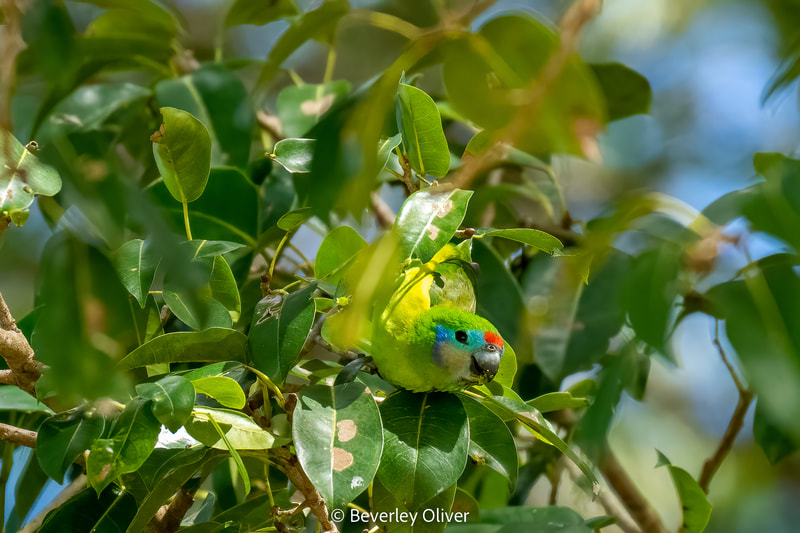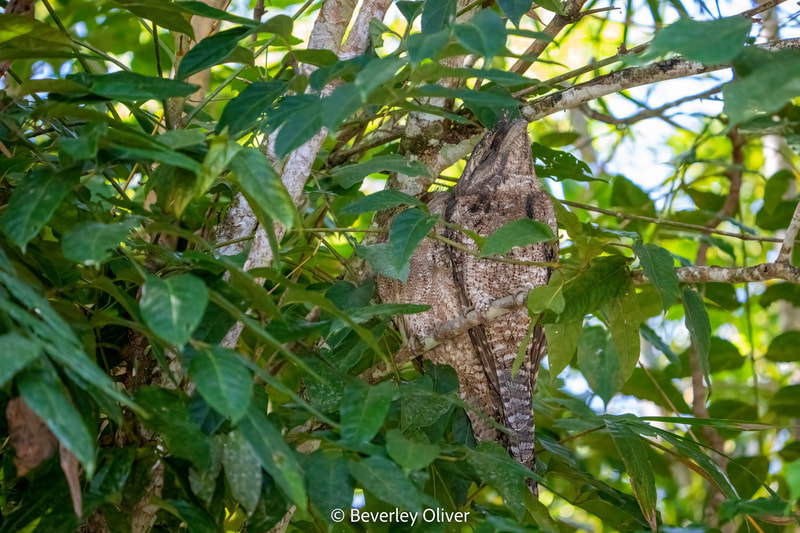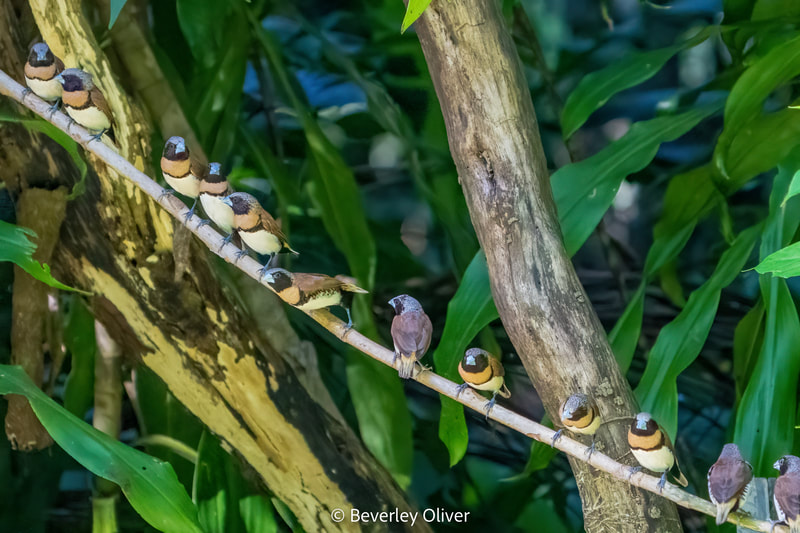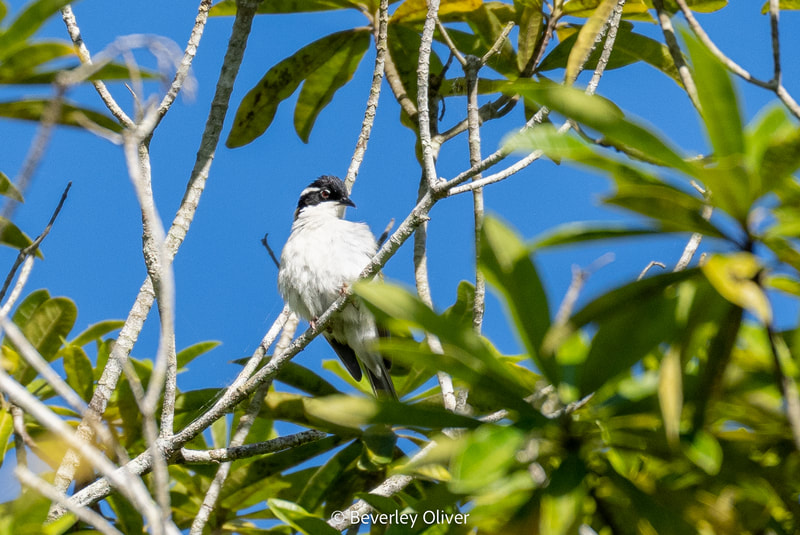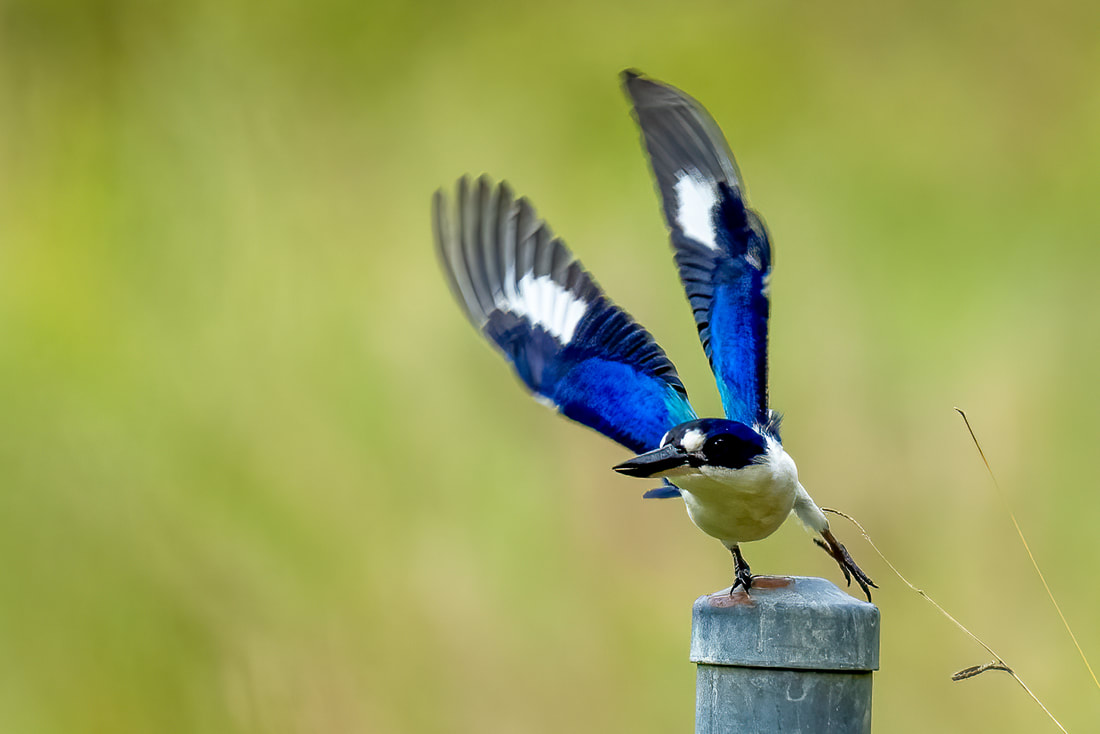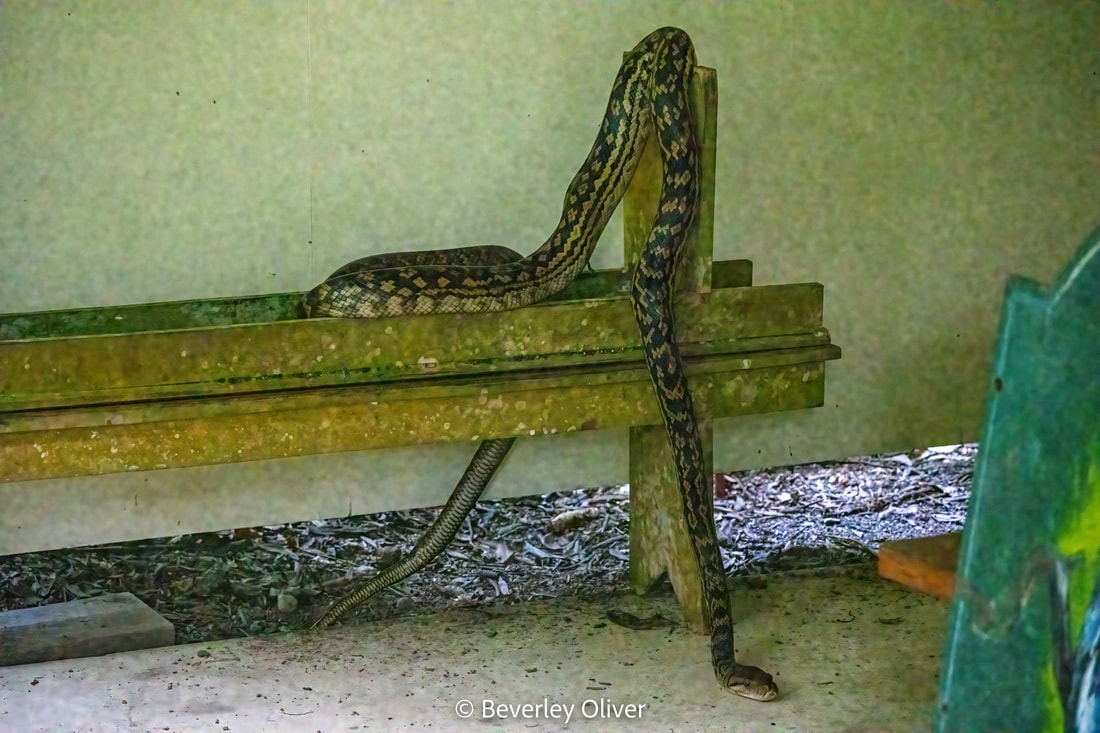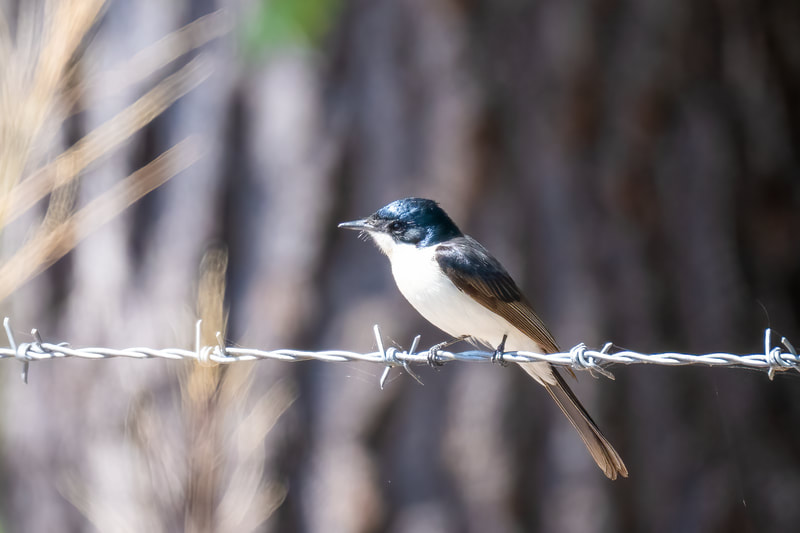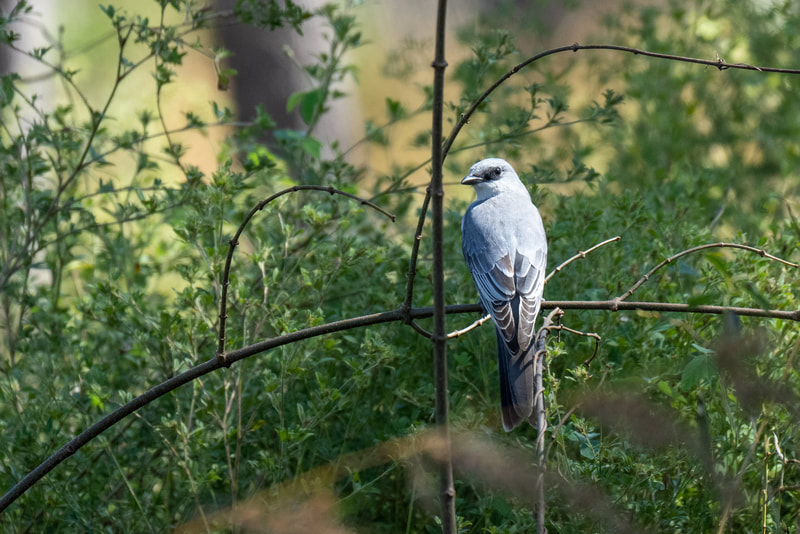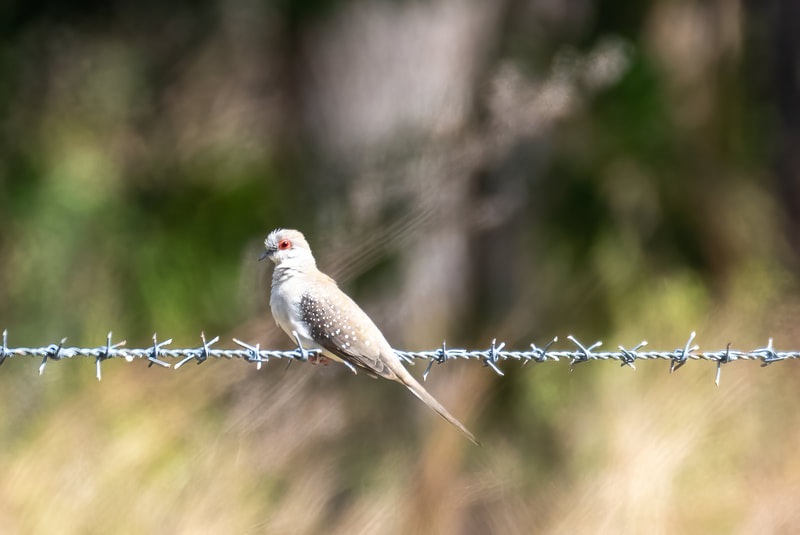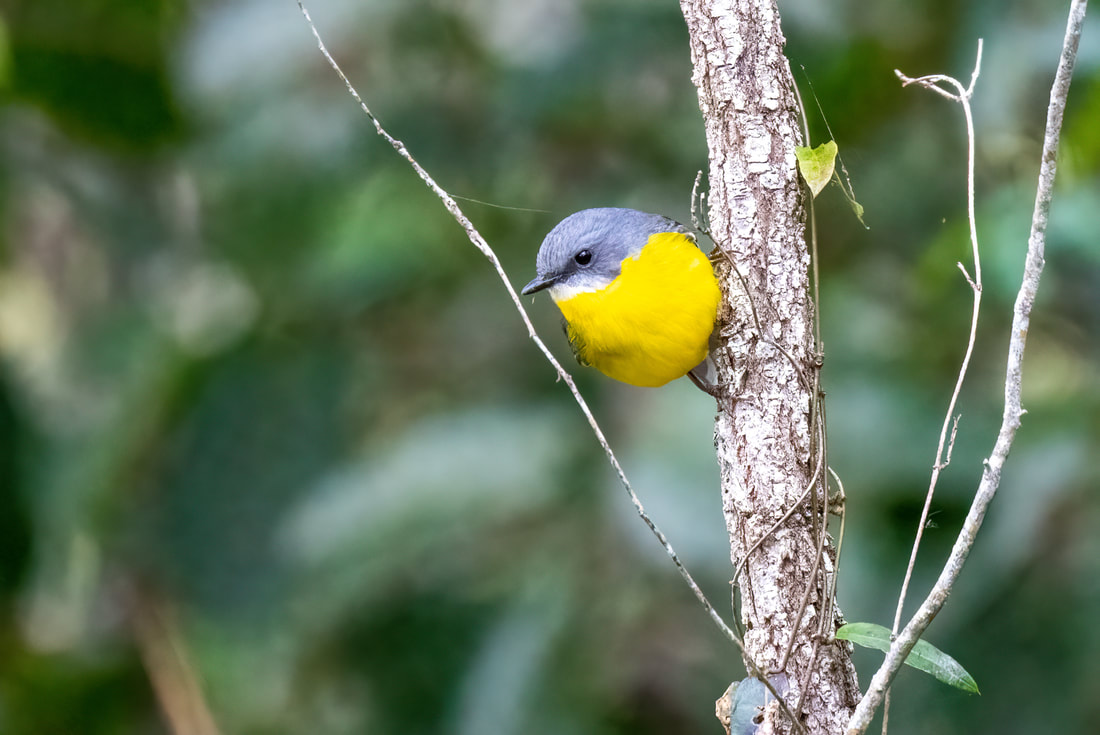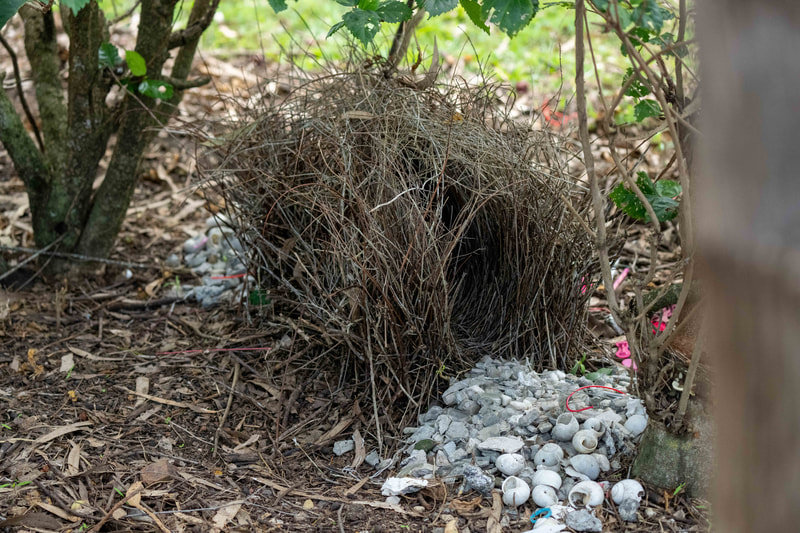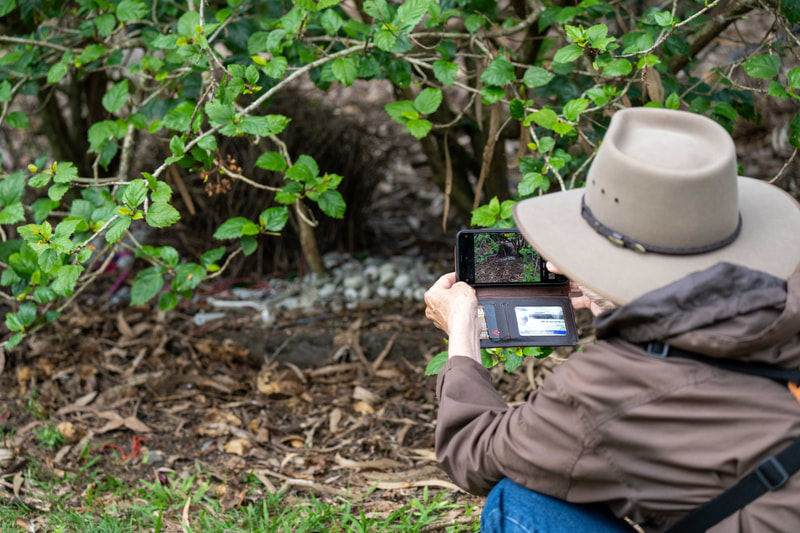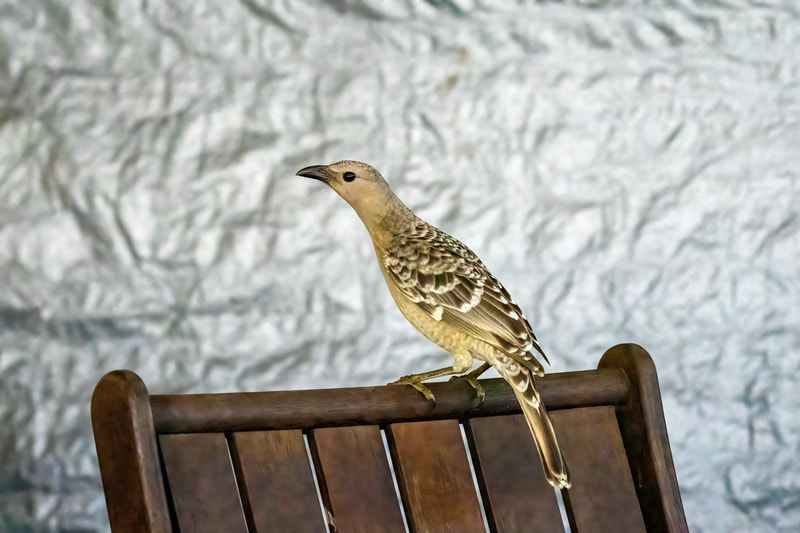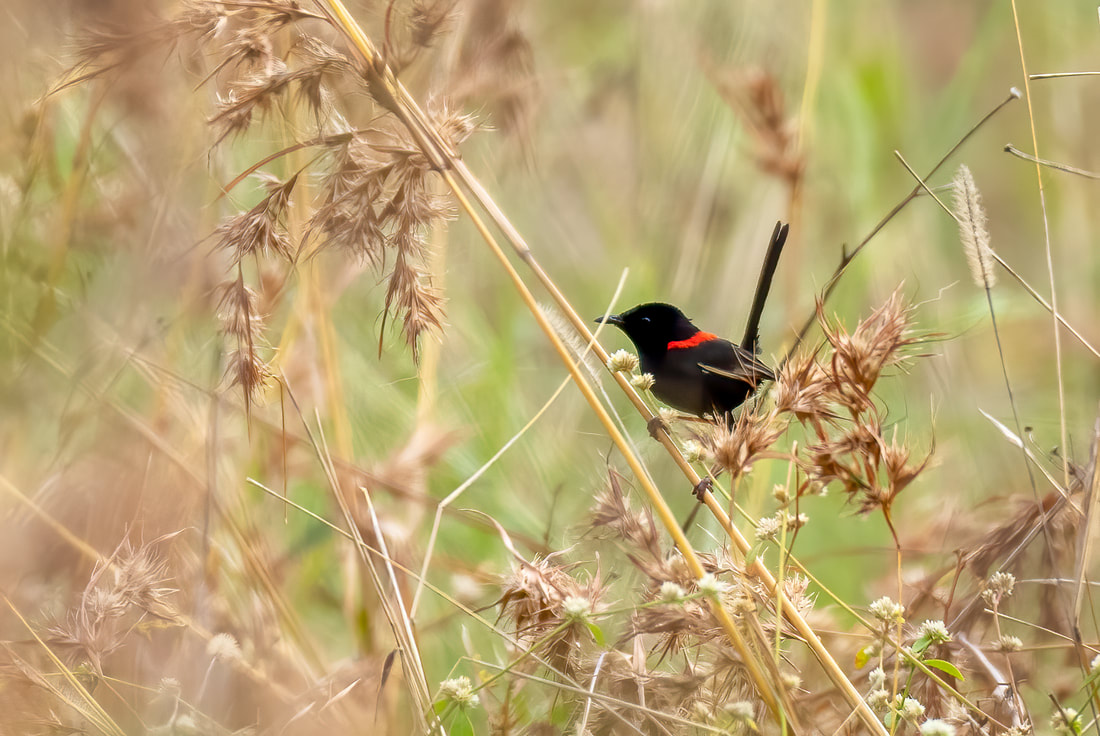|
While staying in Julatten, we went birding with guide Del Richards. Our expectations were high - Del's got a great reputation - but even Del was blown away on this trip. We were hoping to see a mature male riflebird display - and we did, but then the young lads got involved. One young male riflebird found his wings, and displayed for well over two minutes. We couldn't believe our luck. But wait, there's more... A second young male came along and decided to have a go: "You reckon that's something, wait to you I show you mine!" The camera kept rolling, but only still shots, not a movie. Still, you might get a sense of what happened from these pics... This was a great start to the morning, and there was plenty more to see around Julatten. At Kingfishers Birdwatchers Park, we saw several target species including the Macleay's honeyeater, double-eyed fig parrot, spectacled monarch, chestnut-breasted mannikins and a range of other honeyeaters. Walking around the grounds we were entranced by the chestnut-breasted mannikins at the feeders - they would fly in chattering then fly out and line up on a tree branch nearby like so many dolls crowded together before breaking ranks to feed again. Lewins and Macleays honeyeaters vied for treats - bananas in some feeders and a sugar vitamin mix in others (honey can harbour bacteria and mould which can make birds ill and also get into the ecosystem). Blue faced honeyeaters flew in with their harsh cries heralding their entrance to the grassed area and trees outside our balcony. There were many bird baths around the property but having had so much rain they were not as much as a draw card for the birdlife as we would have hoped. The lodge has cabin-type accommodation, each cabin having access to “private” balconies -- though other birders invited us to sit on “their” balcony for best views of the wandering feast of birdlife. The park also has an orchard of older trees and access to a creek. We would sit on the bench at the creek, hoping for a platypus sighting, but we saw only birds - but oh, what birds! Azure kingfishers, rufous fantails and a variety of honeyeaters. We looked for the famed red-necked crake at dusk but were not graced by its presence. We did see a pair of orange-footed scrubfowl and pacific emerald doves sorting through leaf debris but they were always cloaked in the shade of the rainforest. Not so shy were the Australian brush-turkeys who were ever hopeful of finding something in the lawns around the residences. One day while checking out the camp kitchen we were entranced to find a large python draped over the unused bench seats stacked in a corner. We later found out that it wasn’t a constant resident which made us muse: “What's more scary than finding a giant python in the kitchen? Not finding it the next day!” We made the most of the opportunity to visit nearby hotspots: we travelled up to Mount Lewis, stopped at the clearing about 12km from the turnoff, and and walked about a kilometre through the rainforest to the dam (apparently made by pioneer tin miners). The path was a beautiful walk but the hoped for chowchillas and catbirds were heard but not seen. Once again, we were often beset with inclement weather - it was cold, overcast, and sometimes windy in Julatten, but not so much down the road. On another outing we drove north towards Mount Carbine to see the Australian bustards. Despite it being the wrong time of day, we did see two of them pop up from the grasses. Along West Mary Road, we also saw diamond doves and plenty of bee-eaters, restless flycatchers and white-bellied cuckoo shrikes . Nearby Abattoir Swamp was not much of a swamp anymore, but the adjacent woodlands were brimming with birdsong, and skilful birds hiding in the canopy. We did manage to photograph an eastern yellow robin near the carpark. Further afield, Pickford Road near Mareeba was a delightful drive, and led us to our first really good sighing of a blue-winged kookaburra. We really enjoyed Mount Molloy - lunch at the pub was great (complete with chip-seeking visit from a local great bowerbird), and we also loved walking around the town, down past the memorial hall to the state school where we found a great bowerbird's bower. The walk behind the school leads to a beautiful well-maintained woodland area (and a labyrinth), and there is also the Babbler's Hill arboretum planted by local man, Rupert Russell (who also came up with the idea of the labyrinth). By chance, we ran into Rupert who was out walking and enjoying the splendid Mount Molloy sunshine. And on that note, it's so often the people you meet that make a visit so delightful. On our walk around the town, we met another local who asked us if we were birdwatchers (binoculars and cameras are a dead give away!). This kind gentleman suggested we visit Bakers Road, just out of town, take a brief walk on his property out that way to see another bower. We didn't find it, but we took up his invitation and had a lovely time with the local woodland birds, including the red-backed fairy wren.
Comments
|
SUBSCRIBETo get blog updates, signup when the form appears on screen, or contact us. We'll contact you about once a month with an update. To find a blog about a bird or a place, use this search bar, or check out our Google map.
Archives
September 2023
|
